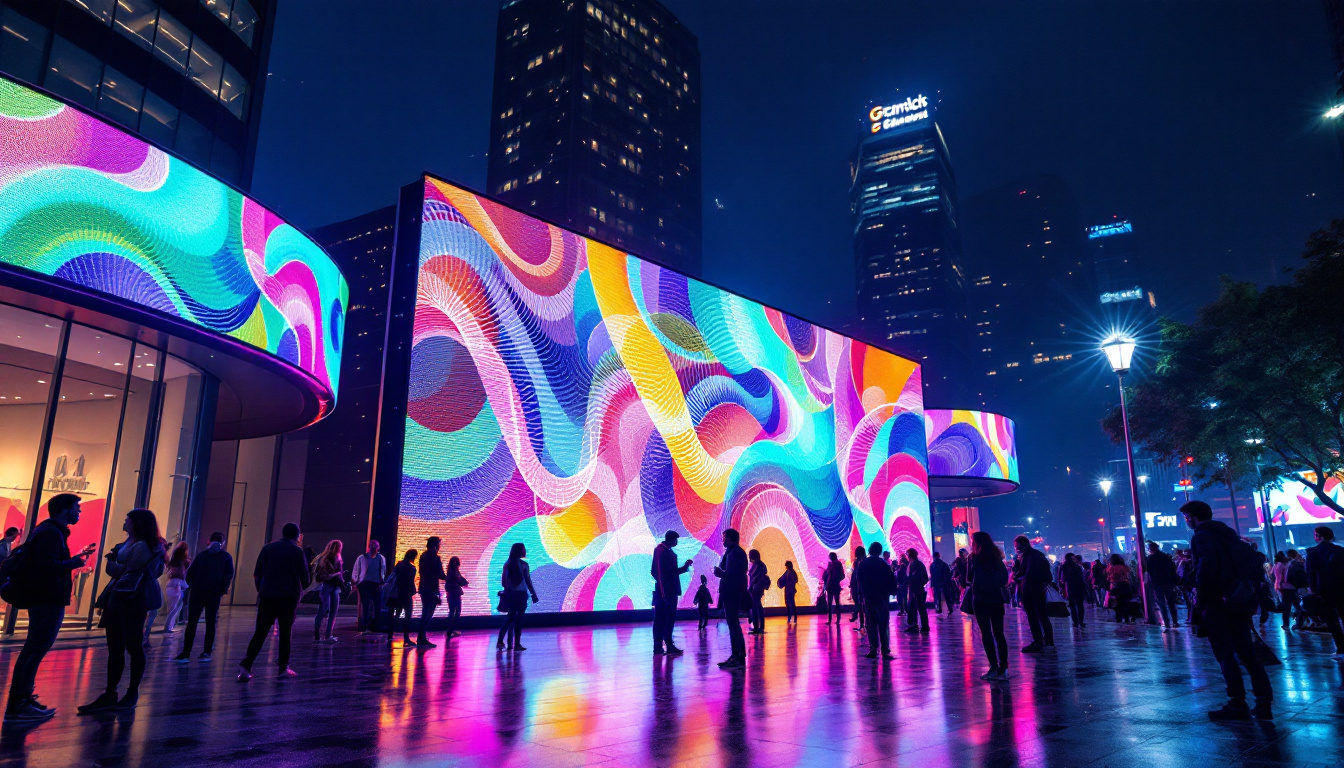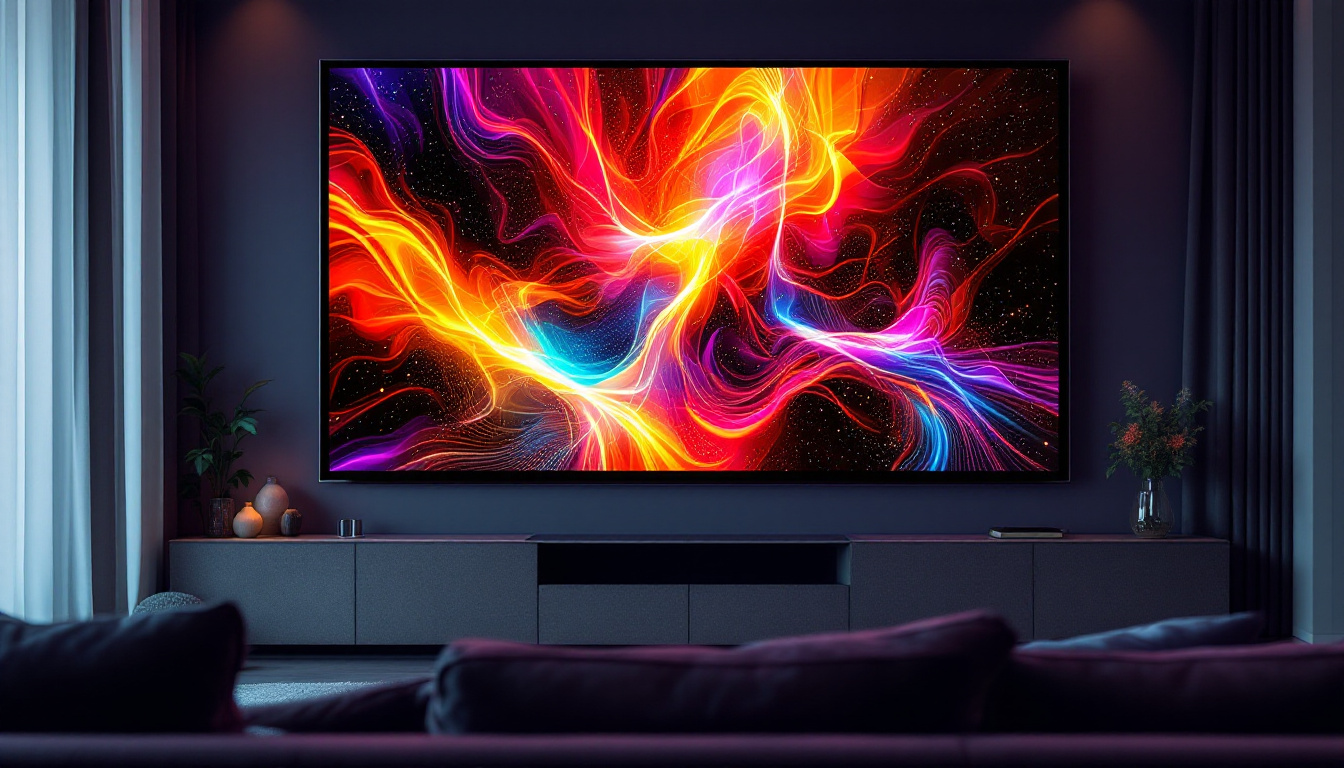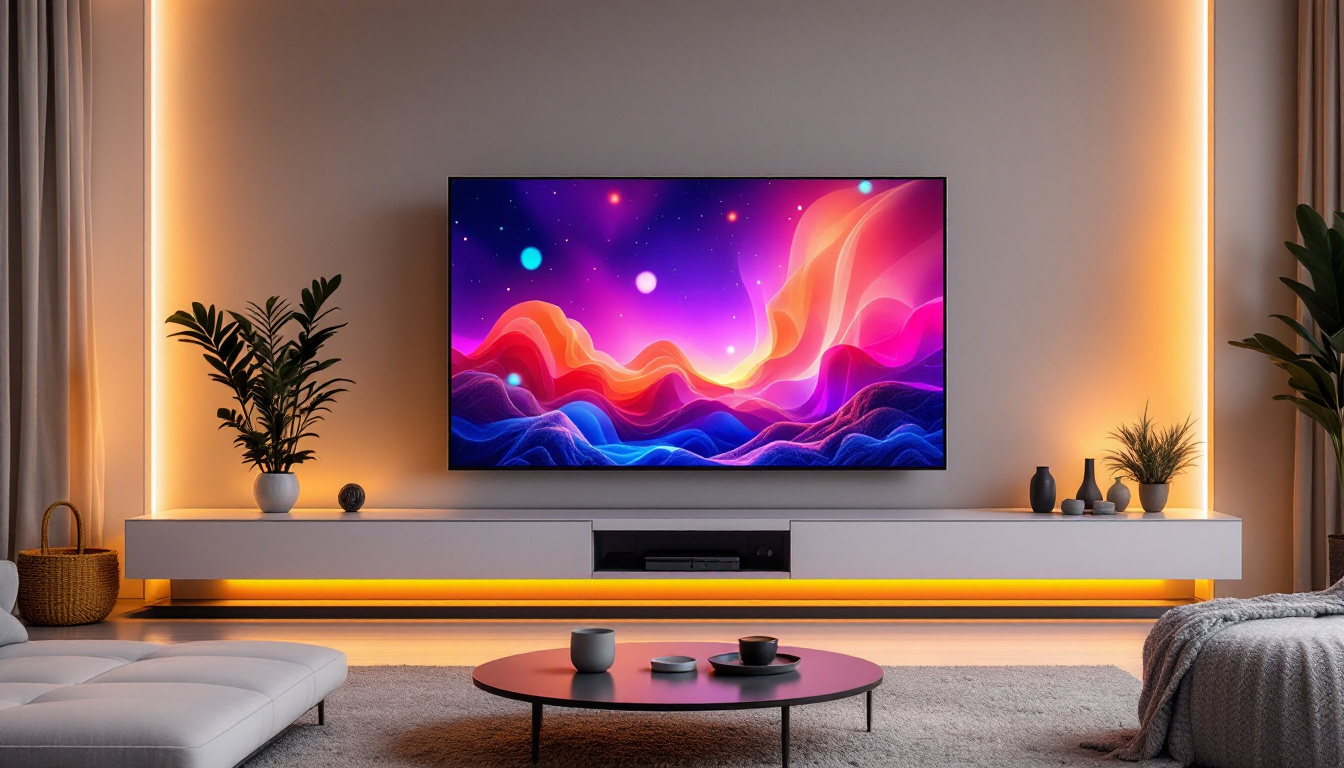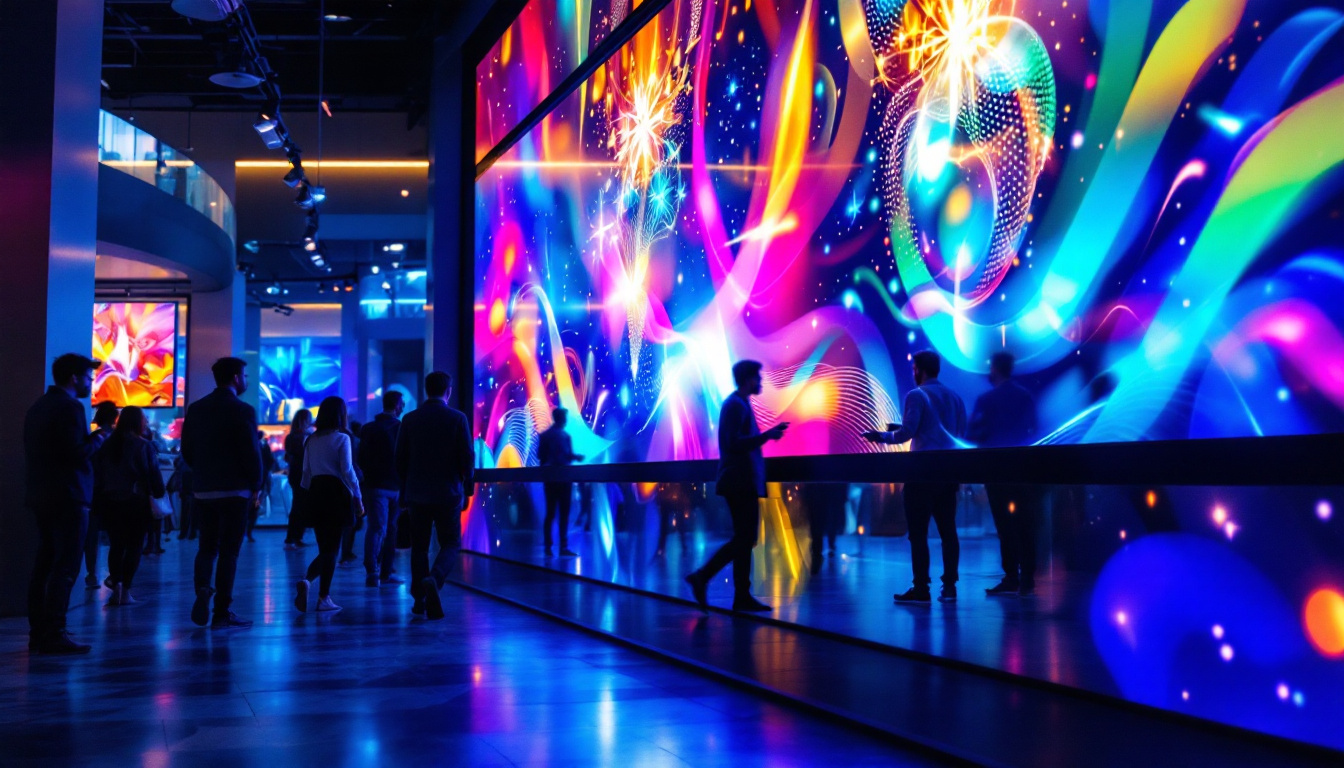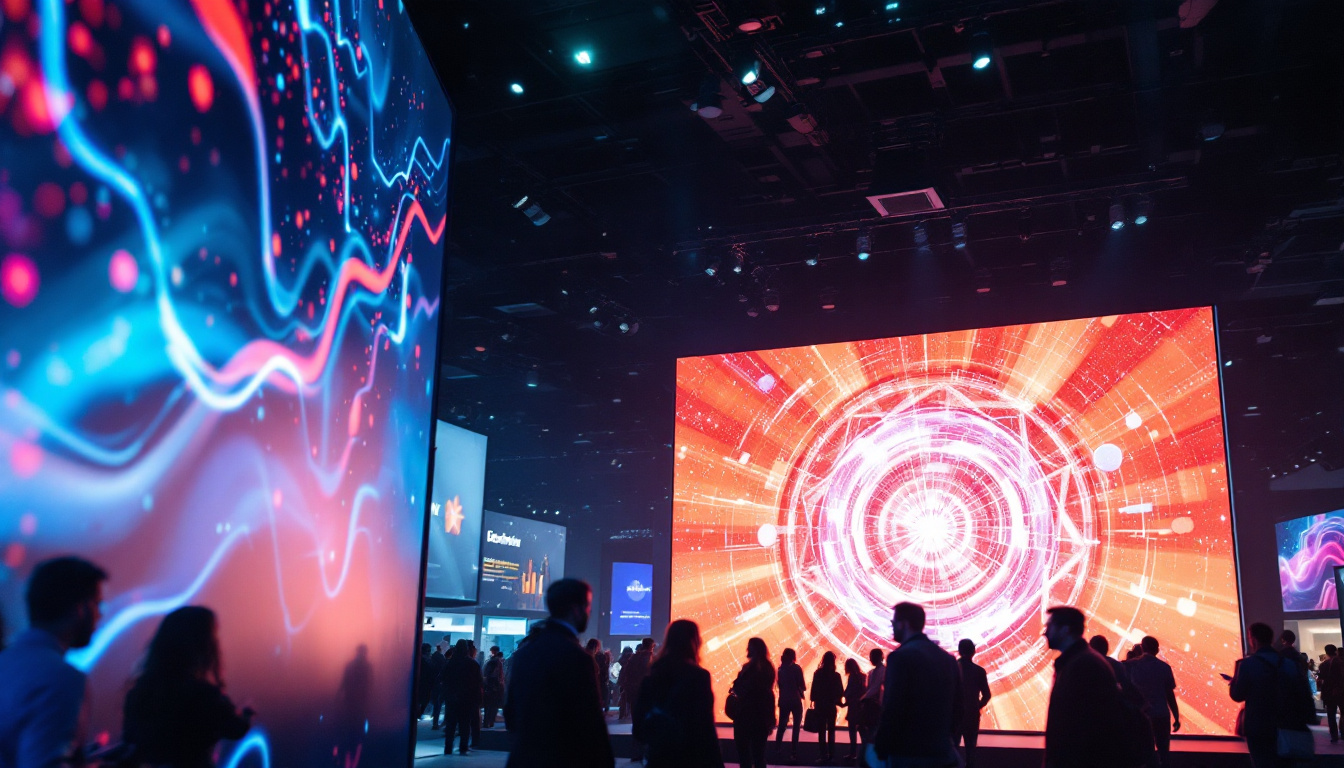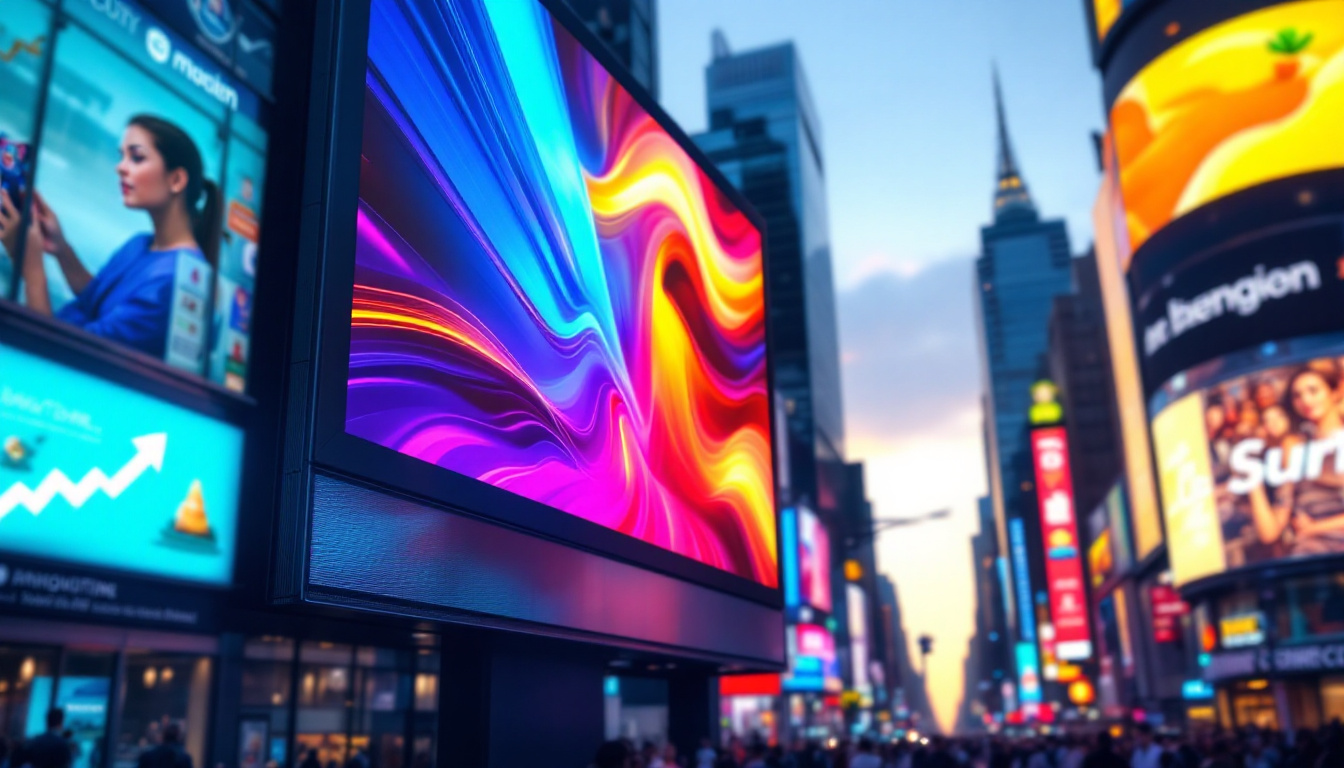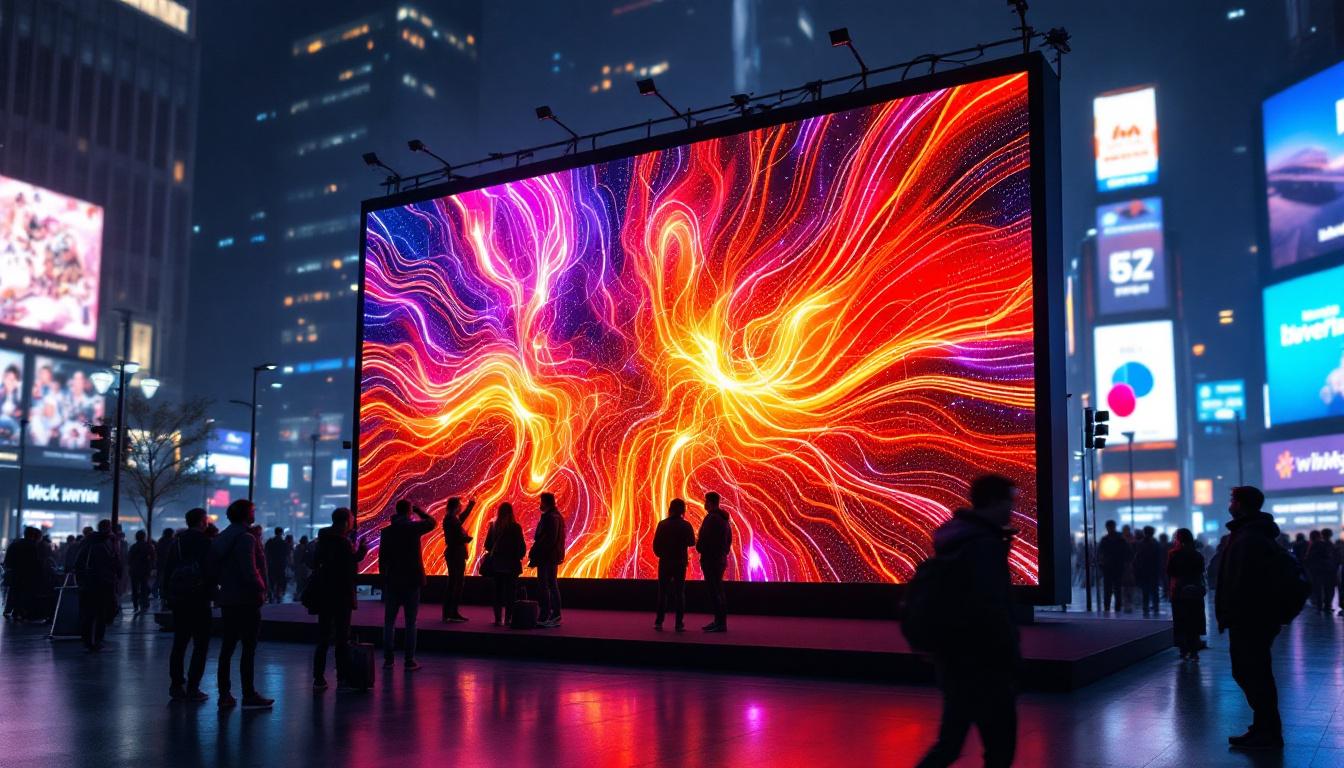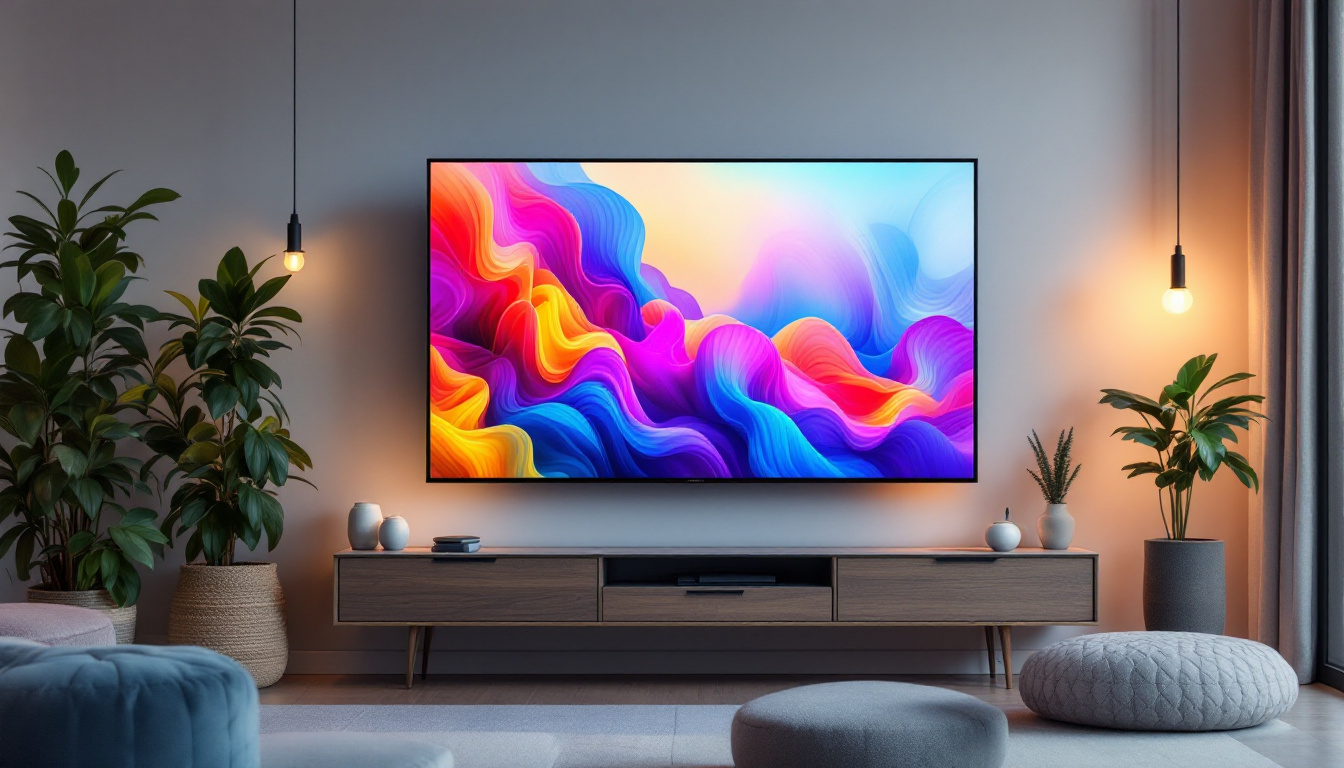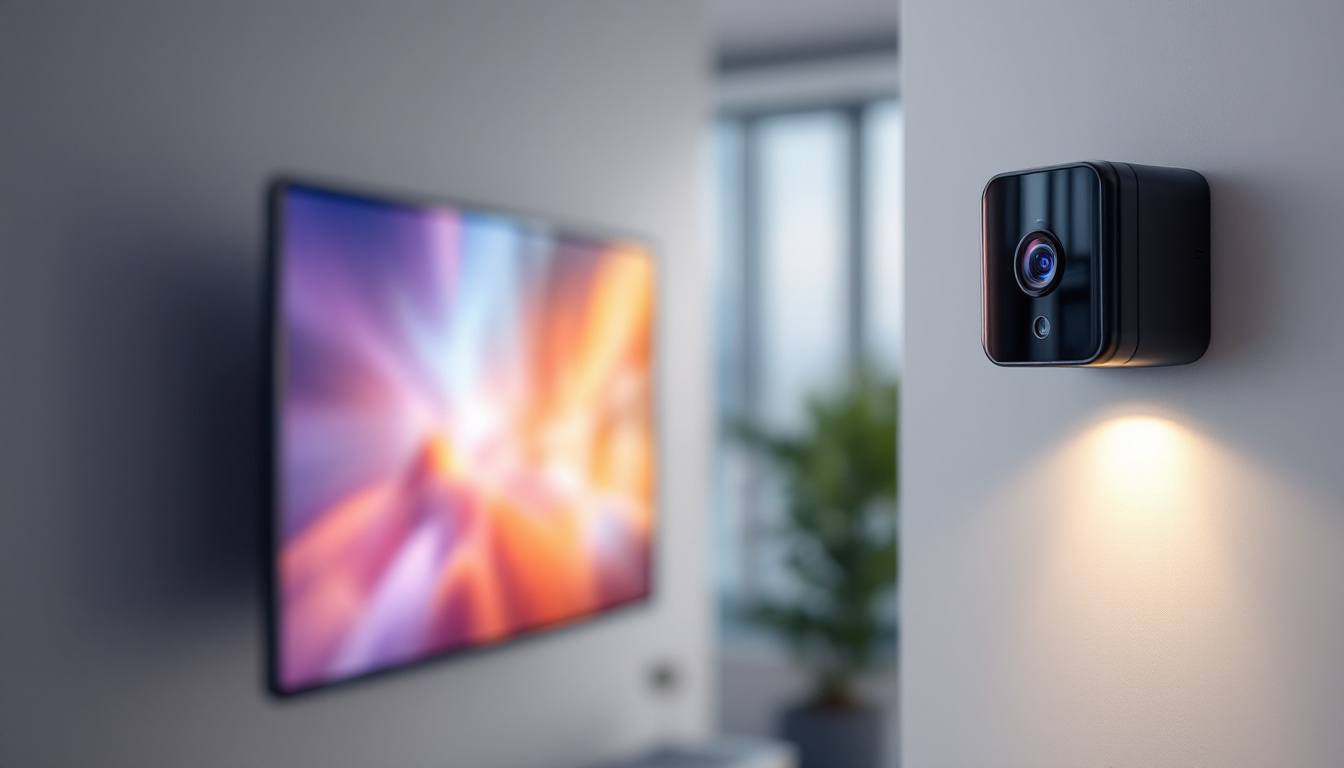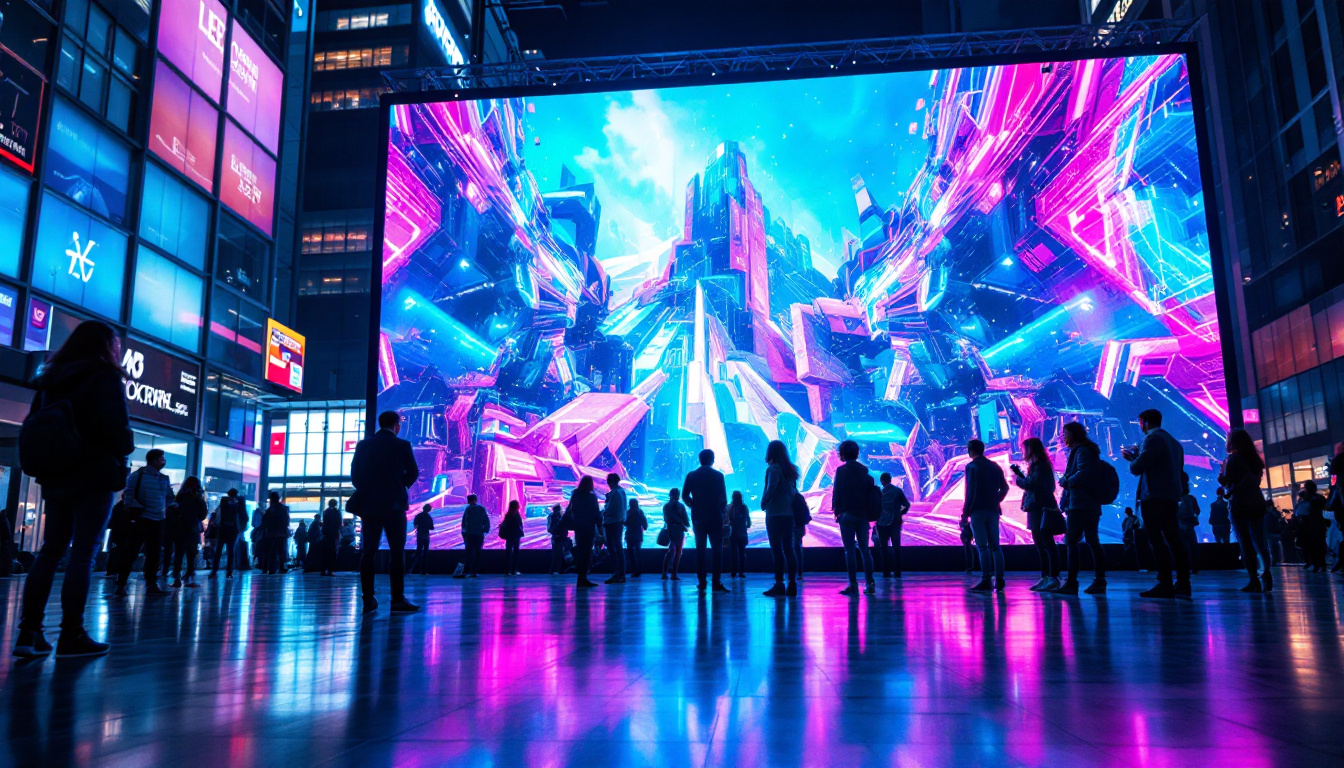In the rapidly evolving world of display technology, LED displays have become a cornerstone for both commercial and consumer applications. Among the various types of LED displays, SMD LED displays stand out due to their versatility, brightness, and efficiency. This article delves into the intricacies of SMD LED displays, explaining what they are, how they work, and why they are increasingly preferred in a variety of settings.
Understanding LED Technology
LED, or Light Emitting Diode, technology has revolutionized the way images and videos are displayed. Unlike traditional display technologies such as LCD or plasma, LEDs emit light directly, which results in higher brightness and better contrast ratios. This makes LED displays ideal for environments with high ambient light, such as outdoor advertising or stadium screens. The vibrant colors and sharp images produced by LEDs have not only enhanced the viewing experience but have also opened up new possibilities for creative advertising and entertainment.
The fundamental principle behind an LED is the electroluminescence phenomenon, where a semiconductor emits light when an electric current passes through it. This simple yet powerful technology has been refined over decades to produce displays that are not only vivid but also energy-efficient and long-lasting. The longevity of LED lights, often exceeding 50,000 hours, significantly reduces maintenance costs and the frequency of replacements, making them an economical choice for both consumers and businesses alike.
Types of LED Displays
LED displays can be broadly categorized into two types: DIP (Dual In-line Package) LEDs and SMD (Surface-Mounted Device) LEDs. DIP LEDs are the older technology, where individual LED bulbs are mounted through holes on a circuit board. These are typically larger and used for applications where pixel pitch is less critical, such as large outdoor billboards. Their robustness and ability to withstand harsh weather conditions make them suitable for long-term outdoor use, where visibility from a distance is a priority.
SMD LEDs, on the other hand, involve mounting tiny LED chips directly onto the surface of a circuit board. This allows for a much smaller pixel pitch, higher resolution, and greater flexibility in design. As a result, SMD LED displays have become the preferred choice for indoor screens, high-definition video walls, and even some outdoor applications. The compact nature of SMD technology enables the creation of thinner and lighter displays, which are easier to install and integrate into various architectural designs. Furthermore, advancements in SMD technology have led to innovations such as flexible LED displays, allowing for curved or uniquely shaped screens that can enhance the aesthetic appeal of any space.
What is an SMD LED Display?
SMD LED displays are composed of surface-mounted LED packages that contain multiple diodes in a single unit. Typically, an SMD LED package includes red, green, and blue diodes, which combine to produce a full spectrum of colors through additive color mixing. This tri-color configuration enables SMD displays to render vivid, true-to-life images with excellent color accuracy.
One of the defining features of SMD LED displays is their compact size. The LEDs are mounted flush against the circuit board, allowing for a higher density of pixels per square inch. This results in sharper images and smoother video playback, especially at close viewing distances.
Pixel Pitch and Resolution
Pixel pitch, the distance between the centers of two adjacent pixels, is a critical factor in determining the resolution and clarity of an LED display. SMD LED displays typically offer pixel pitches ranging from 0.9mm to 10mm or more, catering to different viewing distances and applications.
For example, a pixel pitch of 0.9mm is suitable for indoor environments where viewers are close to the screen, such as conference rooms or retail displays. Conversely, a larger pixel pitch like 10mm is more appropriate for outdoor billboards, where viewers are farther away.
The ability to customize pixel pitch makes SMD LED displays highly adaptable, allowing businesses and event organizers to select the optimal balance between resolution and cost.
Advantages of SMD LED Displays
SMD LED displays offer numerous benefits over other display technologies, making them a popular choice across industries. Below are some of the key advantages that highlight why SMD LED technology is preferred.
High Brightness and Visibility
SMD LEDs are capable of producing extremely bright images, often exceeding 1,000 nits for indoor displays and up to 5,000 nits or more for outdoor units. This high brightness ensures excellent visibility even under direct sunlight, which is crucial for outdoor advertising, sports arenas, and public information displays.
Wide Viewing Angles
Thanks to the small size and arrangement of the LEDs, SMD displays provide wide viewing angles, often up to 160 degrees horizontally and vertically. This means the image quality remains consistent regardless of where the viewer is positioned, enhancing the overall user experience.
Energy Efficiency and Longevity
Compared to older display technologies, SMD LED displays consume significantly less power. Their energy efficiency translates into lower operating costs, which is especially important for large-scale installations that run continuously.
Moreover, SMD LEDs have a long operational lifespan, often exceeding 100,000 hours. This durability reduces maintenance costs and downtime, making them a cost-effective solution in the long run.
Seamless Design and Flexibility
The compact nature of SMD LEDs allows for seamless display surfaces with minimal gaps between modules. This results in a smooth, uninterrupted image that is visually appealing. Additionally, SMD LED panels can be designed in various shapes and sizes, including curved or flexible configurations, enabling creative and innovative display solutions.
Applications of SMD LED Displays
The versatility of SMD LED displays has led to their widespread adoption across numerous sectors. Their adaptability to different environments and requirements makes them suitable for a broad spectrum of applications.
Indoor Advertising and Retail
Retailers leverage SMD LED displays to create eye-catching digital signage that attracts customers and promotes products effectively. The high resolution and vibrant colors of SMD LEDs make them ideal for showcasing detailed images and videos in shopping malls, stores, and showrooms.
Corporate and Conference Settings
In corporate environments, SMD LED video walls are used for presentations, video conferencing, and digital branding. Their ability to deliver clear visuals at close range enhances communication and engagement during meetings and events.
Sports and Entertainment Venues
Stadiums and concert halls utilize large-scale SMD LED displays to provide spectators with live footage, replays, and event information. The brightness and wide viewing angles ensure that even audiences seated far from the stage or field have an excellent viewing experience.
Transportation and Public Information
Airports, train stations, and bus terminals employ SMD LED displays for real-time information dissemination. The clarity and brightness of these displays help travelers easily access schedules, alerts, and announcements.
Outdoor Advertising
While traditionally dominated by DIP LED technology, outdoor advertising is increasingly incorporating SMD LED displays due to their improved resolution and design flexibility. Modern SMD LED billboards can withstand harsh weather conditions while delivering crisp, vibrant content.
Technical Considerations When Choosing an SMD LED Display
Selecting the right SMD LED display requires careful consideration of several technical factors to ensure optimal performance and return on investment.
Pixel Pitch and Viewing Distance
As discussed earlier, pixel pitch should be matched to the typical viewing distance. A smaller pixel pitch provides higher resolution but comes at a higher cost. Understanding the audience’s proximity to the display is essential for making an informed decision.
Brightness and Environmental Conditions
Brightness requirements vary depending on whether the display is used indoors or outdoors. Outdoor displays must have higher brightness levels to combat sunlight, while indoor displays can operate effectively at lower brightness, conserving energy.
Refresh Rate and Color Depth
The refresh rate determines how smoothly video content is displayed. Higher refresh rates (above 1920Hz) are important for applications involving fast-moving images or camera recording, preventing flicker. Color depth affects the range of colors the display can produce, impacting image quality.
Durability and IP Rating
For outdoor installations, the IP (Ingress Protection) rating indicates the display’s resistance to dust and water. A higher rating, such as IP65 or above, ensures the display can withstand adverse weather conditions.
Installation and Maintenance
Modular designs that allow for easy installation and maintenance are preferable. Front-serviceable SMD LED displays enable technicians to access components from the front, reducing downtime and simplifying repairs.
Future Trends in SMD LED Display Technology
The LED display market continues to innovate, with several emerging trends shaping the future of SMD LED technology.
MicroLED and MiniLED Integration
MicroLED and MiniLED technologies represent the next evolution in LED displays, offering even smaller pixel pitches and higher brightness. These advancements promise to deliver superior image quality and energy efficiency, potentially complementing or replacing traditional SMD LEDs in certain applications.
Flexible and Transparent Displays
Research and development in flexible SMD LED panels are enabling curved and foldable displays, expanding creative possibilities for advertising and architectural integration. Transparent LED displays are also gaining traction, allowing screens to blend seamlessly with glass surfaces without obstructing views.
Artificial Intelligence and Smart Displays
Integration of AI with LED displays is enhancing content management, enabling dynamic and context-aware advertising. Smart displays can adjust brightness, content, and even interactivity based on environmental cues and audience behavior.
Conclusion
SMD LED displays represent a significant advancement in display technology, combining high resolution, brightness, and flexibility in a compact form factor. Their broad range of applications, from indoor retail signage to large-scale outdoor billboards, underscores their versatility and effectiveness.
Understanding the technical aspects such as pixel pitch, brightness, and durability is essential for selecting the right SMD LED display for any given application. As technology continues to evolve, SMD LED displays are poised to remain at the forefront of visual communication, delivering vibrant and engaging experiences across industries.
For businesses and organizations looking to invest in modern display solutions, SMD LED technology offers a compelling combination of performance, efficiency, and design flexibility that can meet diverse needs today and into the future.
Discover Cutting-Edge LED Displays with LumenMatrix
Ready to elevate your visual communication with high-resolution, bright, and flexible LED displays? Look no further than LumenMatrix, a pioneer in LED display technology. Our extensive range of solutions, from Indoor and Outdoor LED Wall Displays to innovative LED Sports and Floor Displays, is designed to captivate your audience and amplify your message. Whether you’re seeking to enhance brand visibility or create immersive visual experiences, LumenMatrix has the expertise to transform your space. Check out LumenMatrix LED Display Solutions today and step into the future of digital signage.


